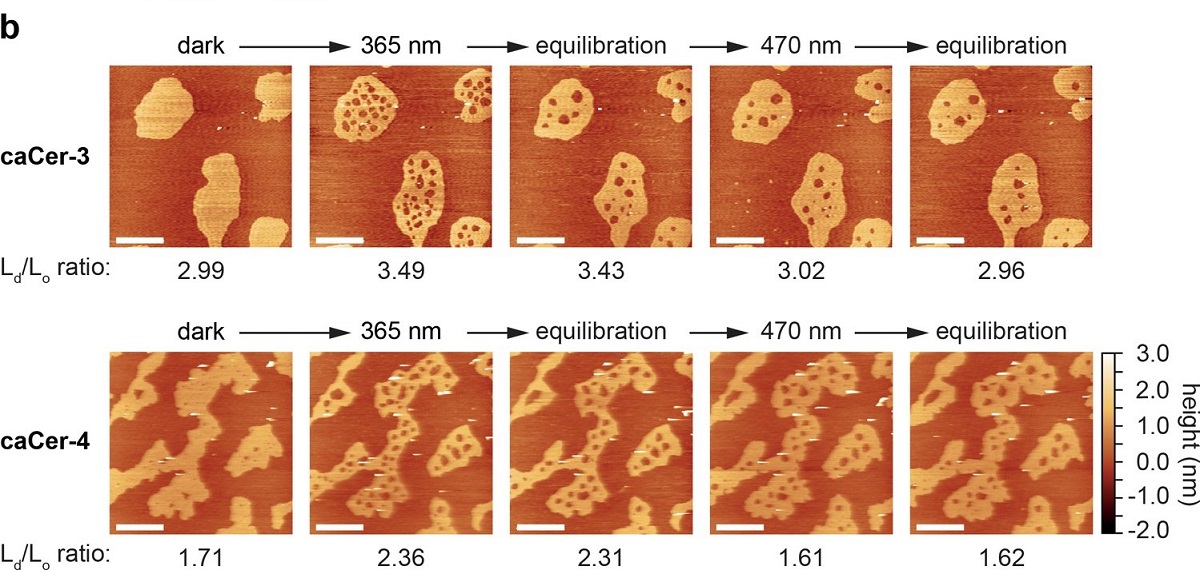Nanostructured electrodes and their flexible integrated systems have great potential for many applications, including electrochemical energy storage, electrocatalysis and solid-state memory devices, given their ability to improve faradaic reaction sites by large surface area. Although many processing techniques have been employed to fabricate nanostructured electrodes on to flexible substrates, these present limitations in terms of achieving flexible electrodes with high mechanical stability.*
In the study “Flexible 3D Electrodes of Free-Standing TiN Nanotube Arrays Grown by Atomic Layer Deposition with a Ti Interlayer as an Adhesion Promoter” by Seokjung Yun, Sang-Joon Kim, Jaesung Youn, Hoon Kim, Jeongjae Ryu, Changdeuck Bae, Kwangsoo No and Seungbum Hong, the adhesion, mechanical properties and flexibility of TiN nanotube arrays on a Pt substrate were improved using a Ti interlayer. Highly ordered and well aligned TiN nanotube arrays were fabricated on a Pt substrate using a template-assisted method with an anodic aluminum oxide (AAO) template and atomic layer deposition (ALD) system.*
The authors show that with the use of a Ti interlayer between the TiN nanotube arrays and Pt substrate, the TiN nanotube arrays could perfectly attach to the Pt substrate without delamination and faceted phenomena. Furthermore, the I-V curve measurements confirmed that the electric contact between the TiN nanotube arrays and substrate for use as an electrode was excellent, and its flexibility was also good for use in flexible electronic devices. Future efforts will be directed toward the fabrication of embedded electrodes in flexible plastic substrates by employing the concepts demonstrated in this study.*
The presented strategy provides a new class of nanostructured 3D electrodes to overcome critical mechanical stability, thus providing a great potential platform for application in a flexible integrated device.*
Topography and transport properties were investigated using a conductive atomic force microscope with NanoWorld Pointprobe® EFM AFM probes ( Pt-coated conductive AFM tips).*

Analysis of TiN NTs/ Ti / Pt samples (a) XRD, (b) schematic of C-AFM setup, (c) AFM height image, and (d) local I-V curve by C-AFM.
*Seokjung Yun, Sang-Joon Kim, Jaesung Youn, Hoon Kim, Jeongjae Ryu, Changdeuck Bae, Kwangsoo No and Seungbum Hong
Flexible 3D Electrodes of Free-Standing TiN Nanotube Arrays Grown by Atomic Layer Deposition with a Ti Interlayer as an Adhesion Promoter
Nanomaterials 2020, 10, 409
DOI: 10.3390/nano10030409
Please follow this external link for access to the full article: https://doi.org/10.3390/nano10030409
Open Access The article “Flexible 3D Electrodes of Free-Standing TiN Nanotube Arrays Grown by Atomic Layer Deposition with a Ti Interlayer as an Adhesion Promoter“ by Seokjung Yun, Sang-Joon Kim, Jaesung Youn, Hoon Kim, Jeongjae Ryu, Changdeuck Bae, Kwangsoo No and Seungbum Hong is licensed under a Creative Commons Attribution 4.0 International License, which permits use, sharing, adaptation, distribution and reproduction in any medium or format, as long as you give appropriate credit to the original author(s) and the source, provide a link to the Creative Commons license, and indicate if changes were made. The images or other third party material in this article are included in the article’s Creative Commons license, unless indicated otherwise in a credit line to the material. If material is not included in the article’s Creative Commons license and your intended use is not permitted by statutory regulation or exceeds the permitted use, you will need to obtain permission directly from the copyright holder. To view a copy of this license, visit http://creativecommons.org/licenses/by/4.0/.


